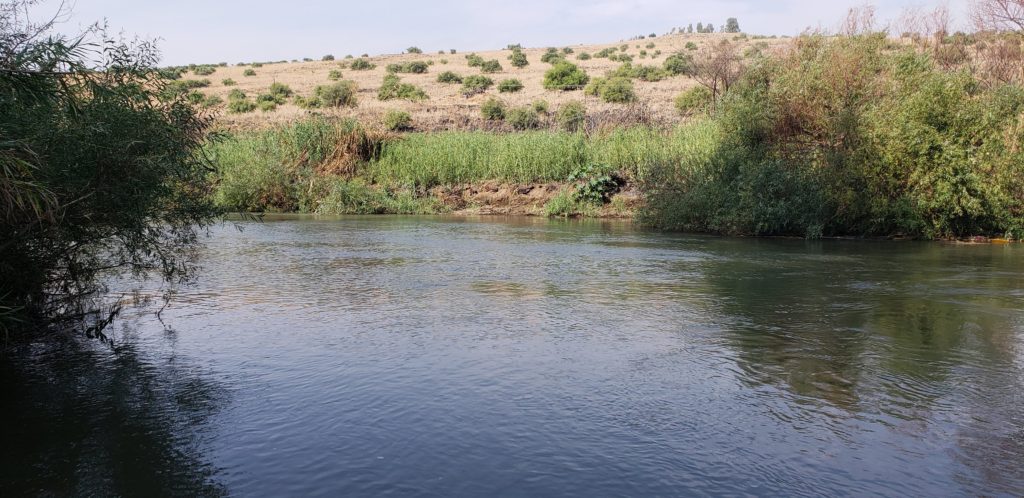Our 3 week housesit was up and it was time to leave Jerusalem, a city we had become so familiar with. We took a bus to Tiberias, located by the Sea of Galilee. We walked uphill from the bus station to our air bnb – which had sensational views. All we wanted to do was stay on the verandah and look out at the lake… known by locals as Kinneret or Lake Tiberias.
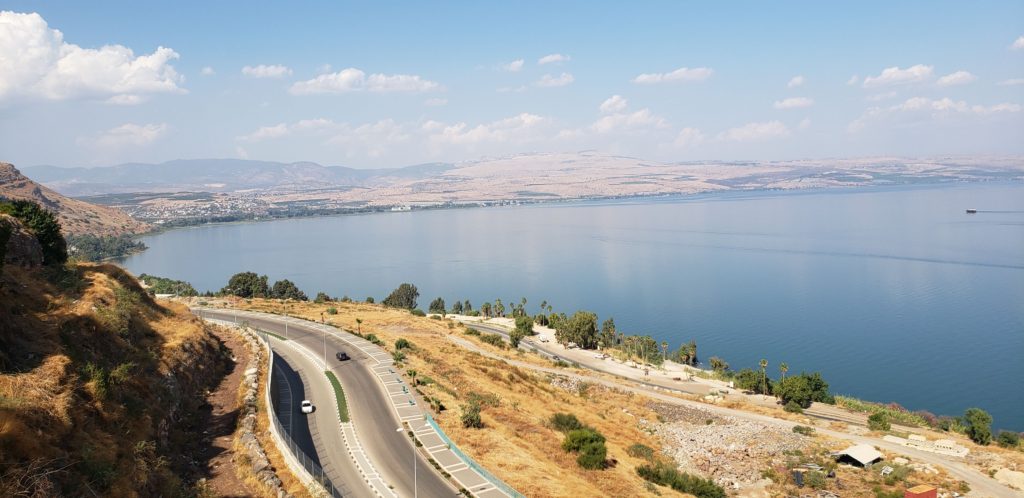
Our host was a lovely Jewish woman who greeted us warmly, gave us homemade fruits smoothies and then invited us to a nearby fresh water spring. We said we’d like to have some lunch first so needed time to cook rice – she then offered her rice which was already cooked. Really kind! After an hour or so of getting lunch and resting a bit, we headed off in her car to the nearby spring.
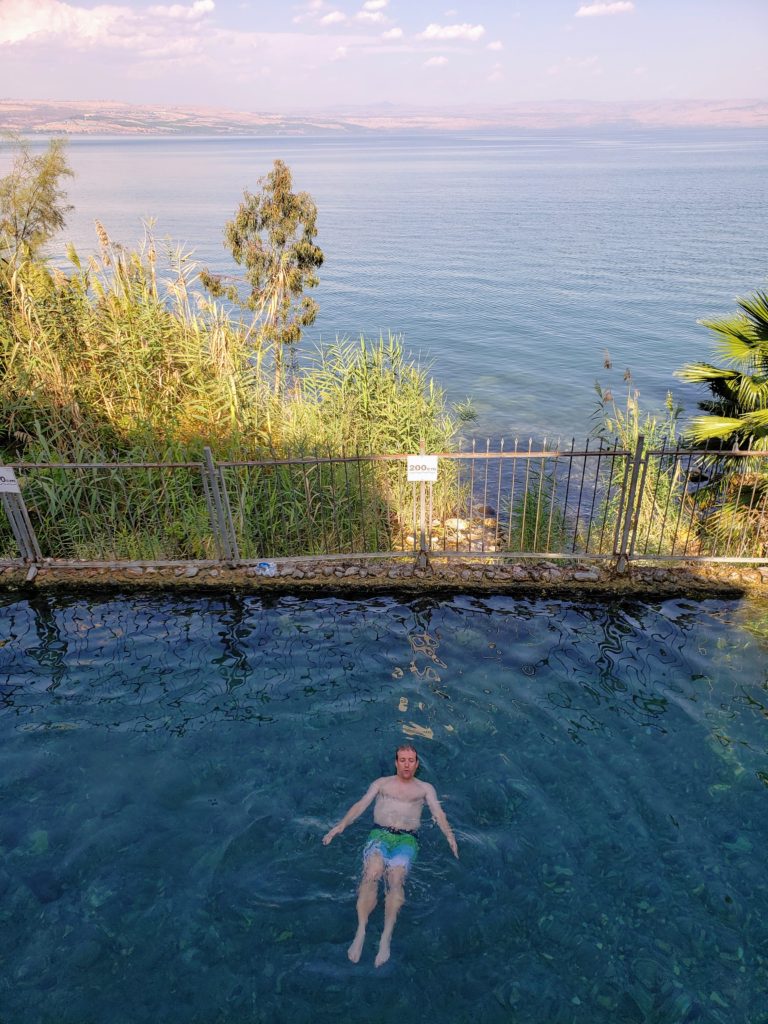
There’s no way we would have found it on our own as the entrance was just a hole at the side of a broken fence of an abandoned old YMCA building. We went past the rubbish at the entrance and down some steps and there, not far from the lake’s edge was an area for swimming, filled with fresh spring water. It wasn’t a hot spring, just a nice fresh water spring at a refreshing temperature. Over the high neighbour’s fence was another pool, not in use at the time but apparently used by Russians for baptisms.
There was a mix of Arabs and Jewish people at our ex-YMCA, now abandoned to the locals-who-are-in-the-know pool… mostly young people. We had a nice time relaxing in the refreshing water, watching kids jump in from the railing above and chatting to our host who was also taking a dip.
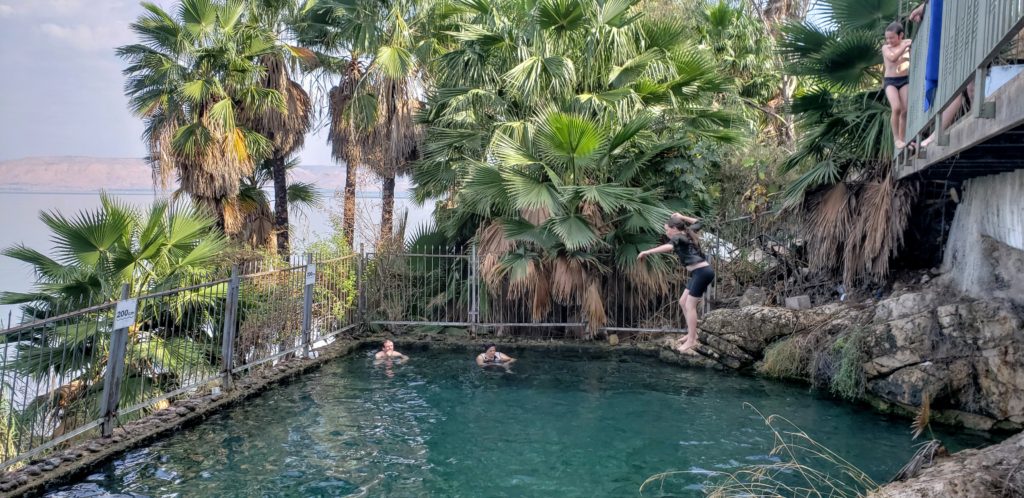
After covering topics such as having children and the problems of politics, rubbish and Arabs in Israel (!), we headed home to enjoy more stunning views. After nightfall we walked about 10 minutes downhill to a restaurant in a petrol station. We read about it on tripadvisor and weren’t entirely sure we found the right place until they brought out 21 (!) little side dishes before we even ordered (as reviews had mentioned). More about this meal on my Food in Israel blog post, coming soon.
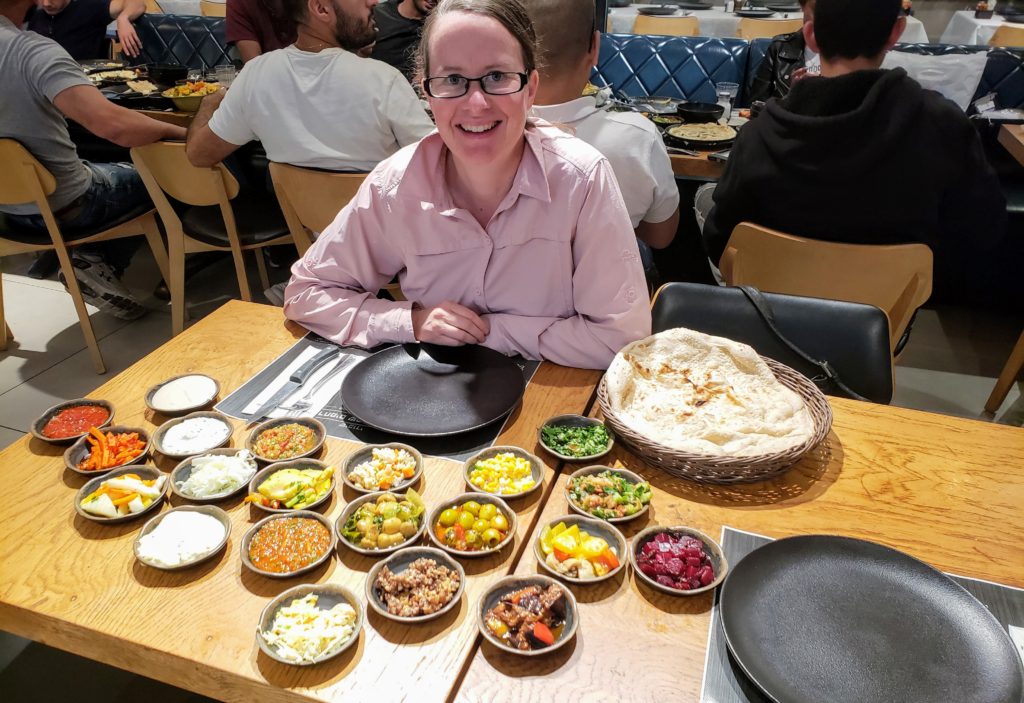
Antony was all energised after his meal and wanted to head further down the hill to explore the waterfront. I was too tired so took the key and headed up the hill to bed instead, opting to just explore the next day. In the morning we wandered downtown and checked out the waterfront area (pretty quiet).
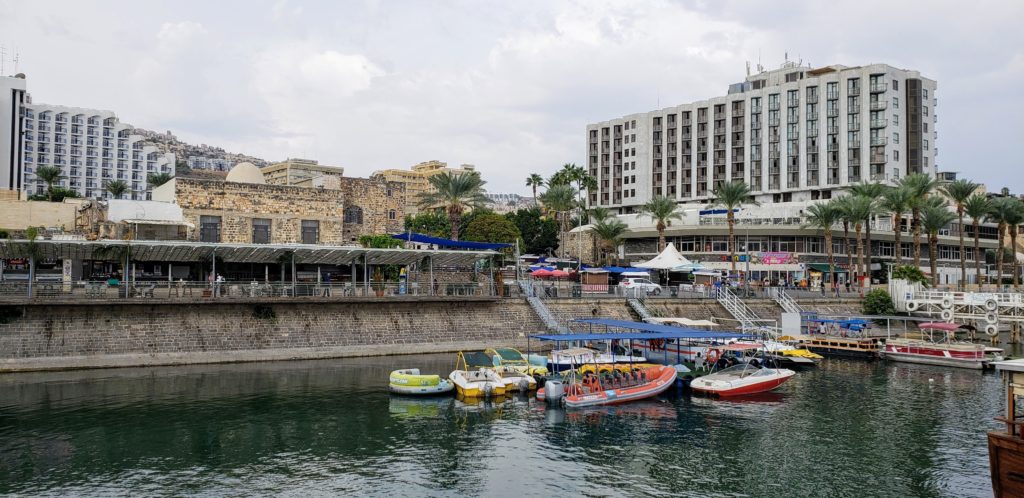
We spotted the ‘Leaning Tower‘ on the edge of the water, one of Tiberias landmarks built by Muslim ruler Daher El Omar in the 1700s. It was built on top of Crusader-era city wall ruins and is now part of the Greek Orthodox Monastery here which was previously the site of a synogogue! Mix of religions very evident – many churches and syngogues but also minaets.
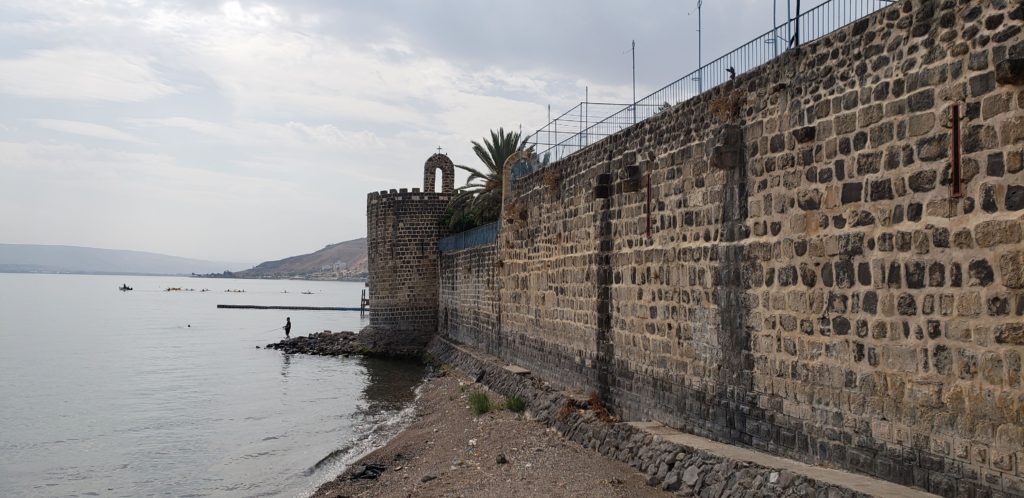
We went into St Peter’s Church which was close to the waterfront area. We followed google map to get to it but then there was just a gate, we couldn’t actually see a church. We rang the doorbell though and out came someone to unlock the gate and let us in to see the church.
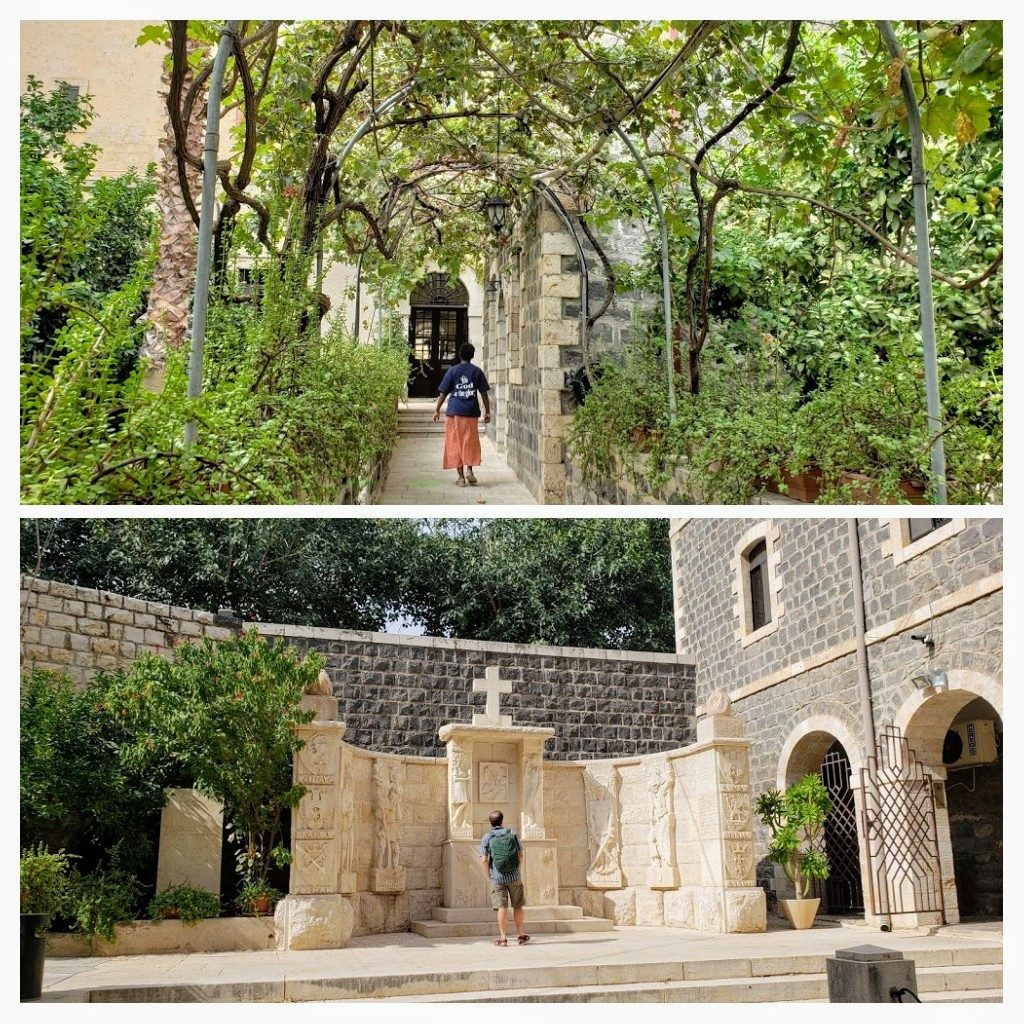
We followed the girl with the ‘To God be the glory’ T-shirt through a leafy green garden with fruit ripening on the trees and into a building which had a side entrance to the church. She left us to explore the church returning later to let us out.
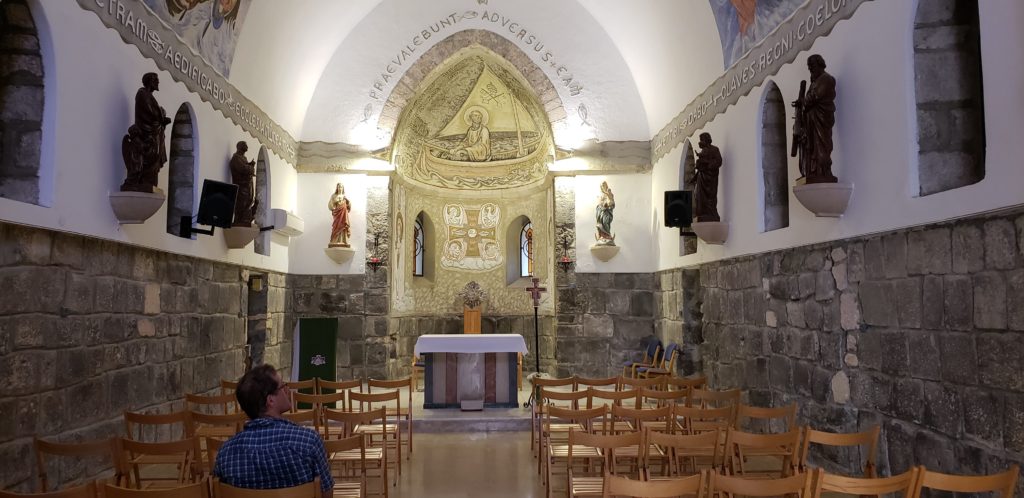
It’s always a bit more special when you have a place to yourself and we did like this church. As its name implies it was built in honour of Simon Peter, the fisherman from around these parts, who Jesus called to be his disciple, and later commissioned as the rock on which he’d build his church (Peter means rock). An interesting choice seeing as Peter was rebuked for having little faith (Matthew 14) and then denied he knew Jesus three times!
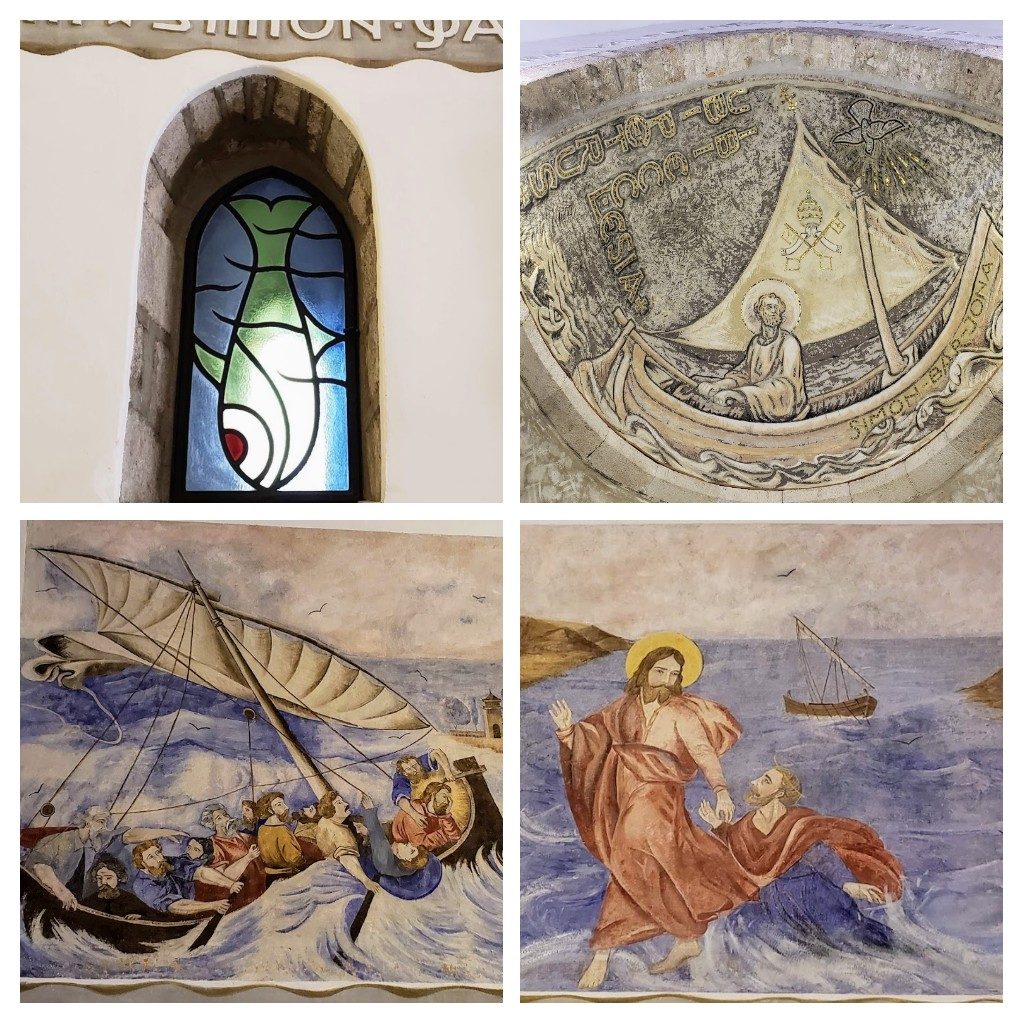
This church was founded in the early 12th century by crusaders but soon became a mosque when Muslims arrived on the scene and defeated the crusaders in the Battle of Hattin in 1187. During the 18th century Franciscans took control of the church and in 1847 established a monastery here. The statue in the courtyard (below left) is an exact replica of the 13th century statue of St Peter by Arnolfo di Cambio (which is in the Vatican). It was brought here in 1833.
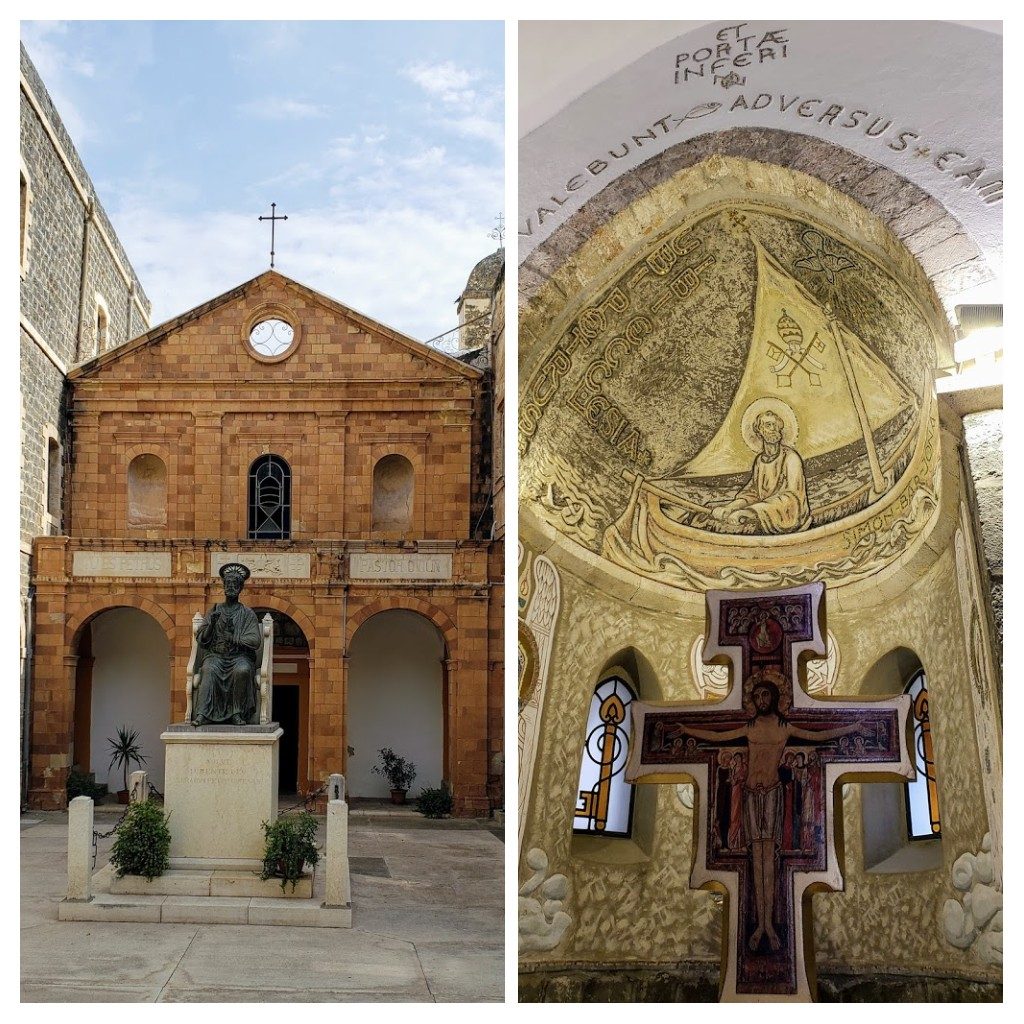
After our pleasant visit at St Peter’s we wandered around taking in a few more of the local scenes… walking past the now abandoned Al-Bahr mosque with a random mermaid kids ride outside it and ruins of the 12th century crusader fort.
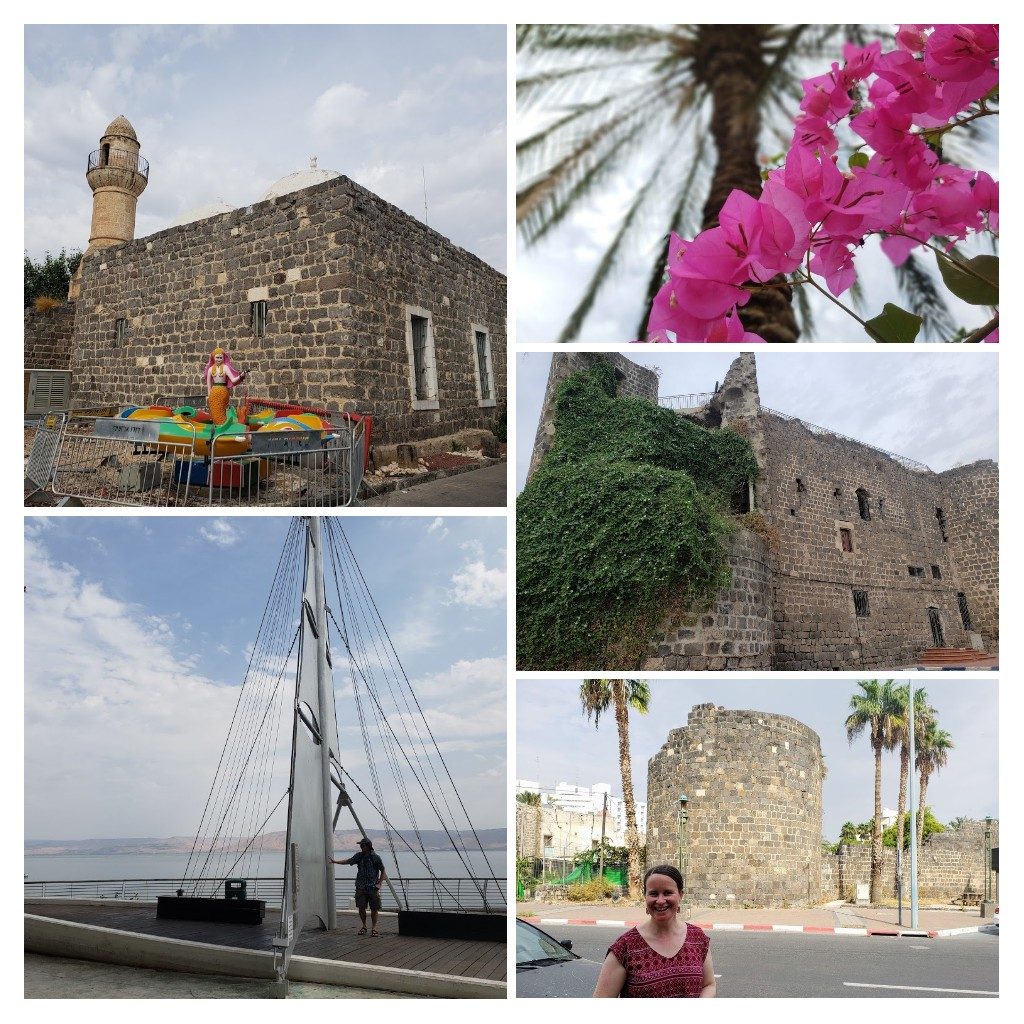
We came across the visitors centre and got chatting with the guy and Antony asked about the Golan Heights. He suggested we rent a car for a day and told us the price. We’d not considered renting a car but it seemed like a great idea to do the following day and so we followed his advice. More on that little adventure in the next post!
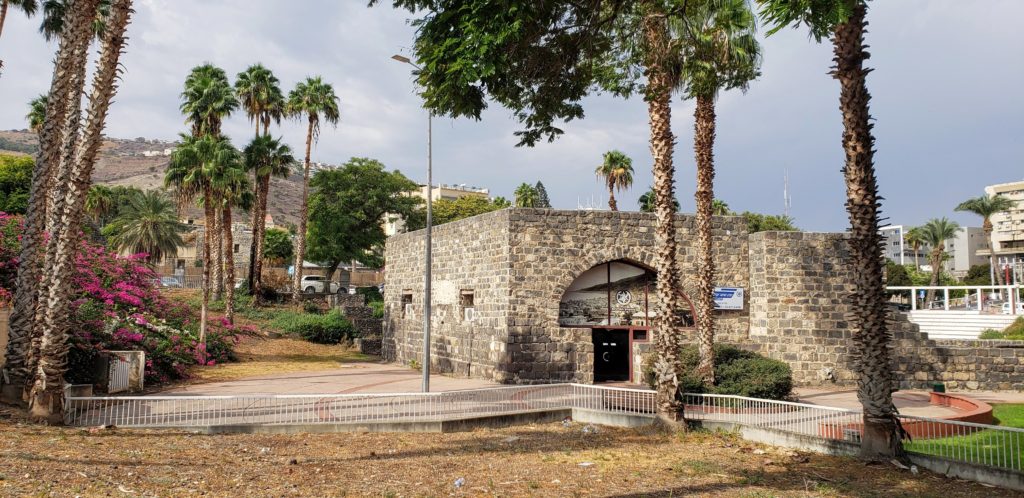
The Scots hotel seemed to be a Tiberias tourist attraction but we weren’t sure why so we entered the lobby which looked like any other hotel lobby, only small. But then we were invited to go through some doors to the outside and we understood why this was a place to see.
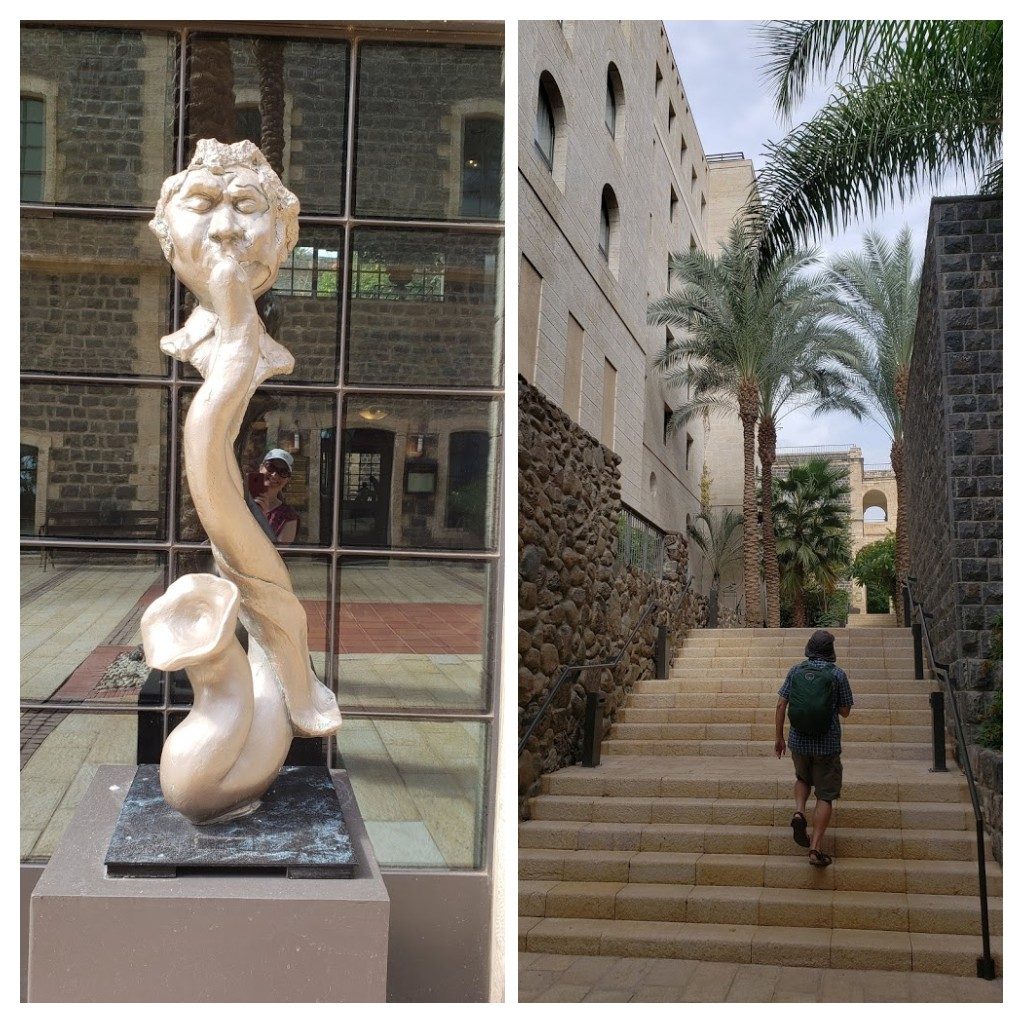
There were lovely buildings, gardens, sculptures and art… and great views. It was really peaceful and super nice that they opened it up for the public to enjoy, not just paying guests.
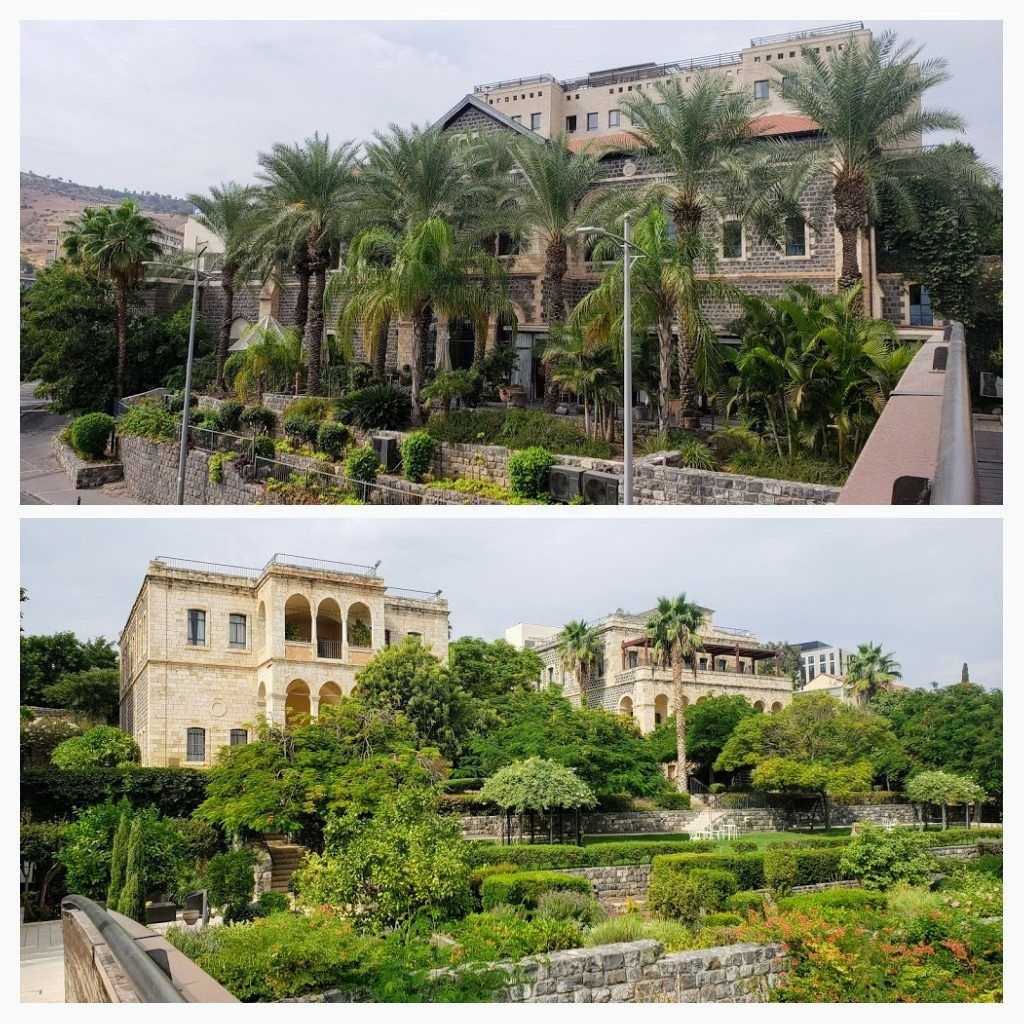
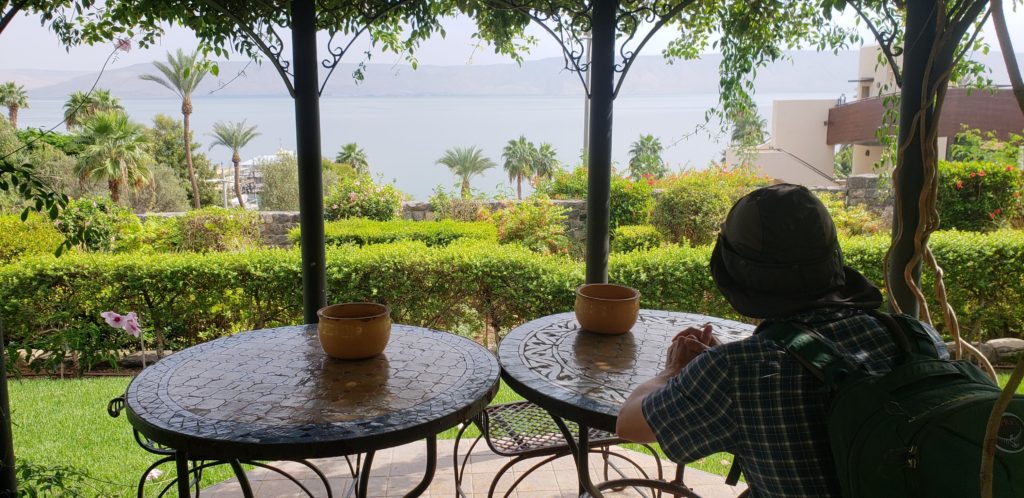
The hotel was established by the Church of Scotland in 2004 in the historical Scottish Hospital compound- dating back to 1894. After the State of Israel was established the compound became a maternity hospital and then when that closed, in 1959, it became a guesthouse. In 1999 renovations began and over $20 million NZD later you have a truly stunning 5 star hotel complex! As the hotel website explains; ‘When planning the hotel, great emphasis was placed on conserving the character of the compound by producing a synergy between new and old and creating an atmosphere of calmness and mystery’. We were certainly impressed! But at over $500 NZD a night for the cheapest room on off-peak nights, it’s not for the likes of us!
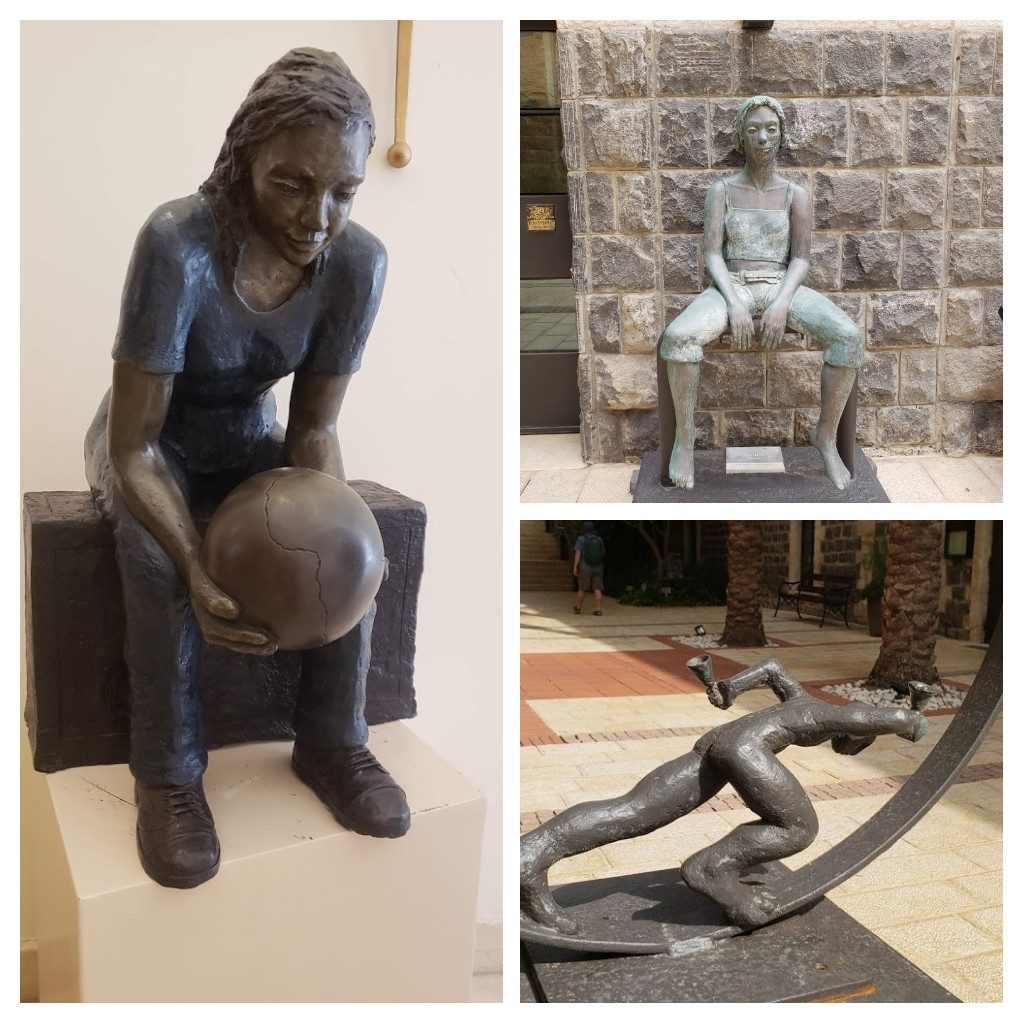
Having explored the main sights of Tiberias, I was on a mission to find a seamstress. Our host had written in Hebrew for me ‘Please show me where the seamstress is’ which proved most useful! On only our second day into our 4 month trip my favourite bra went in the wash and came out with one underwire part completely out. This has happened I’m sure to many a bra-wearer, myself included in the past. Usually you can just poke it back in and then sew up the hole so it doesn’t come out and poke you or fall out in the wash. The trouble was there was no hole to be found. I poked and prodded and looked, as did Antony and both our friends Simon and Nagisa. I then tried to make a hole to push the wire back in but couldn’t manage it. It was a complete mystery. When I found the seamstress, who was Russian speaking, I just showed her the bra and within 20 seconds she had located the hole and managed to poke the wire through. Then she used the machine to sew up the hole. I couldn’t believe it! I was SO happy to have the situation resolved, it was pretty much the highlight of my day! 😉
We found cheap pizza for lunch a few doors down then we headed for the ‘beach’. We were going to catch a bus to a particular place a few kms south of the town but in the end just walked and found something about 30 mins away. Strangely there was a little bit of rain.

It was so nice to cool off in the water on an otherwise stinking hot day (again!). After our swim we made our way back to town, got some drinks and dates and headed home. We both had some work to do so did that, stayed in for dinner then the next day explored the north of the lake.

There were a few significant Christian sites to see near the top of the lake – unfortunately the Sea of Galilee is a very popular area for those on the ‘Jesus trail’ – so we shared the experience of these places with hundreds, possibly a thousand others who came on bus after bus!
First up was the Church of the Multiplication at Tabgha, built on the site where Jesus is believed to have performed the miracle of the multiplication. This is where he blessed two fish and five loaves of bread and they multiplied so that the thousands gathered all had something to eat.
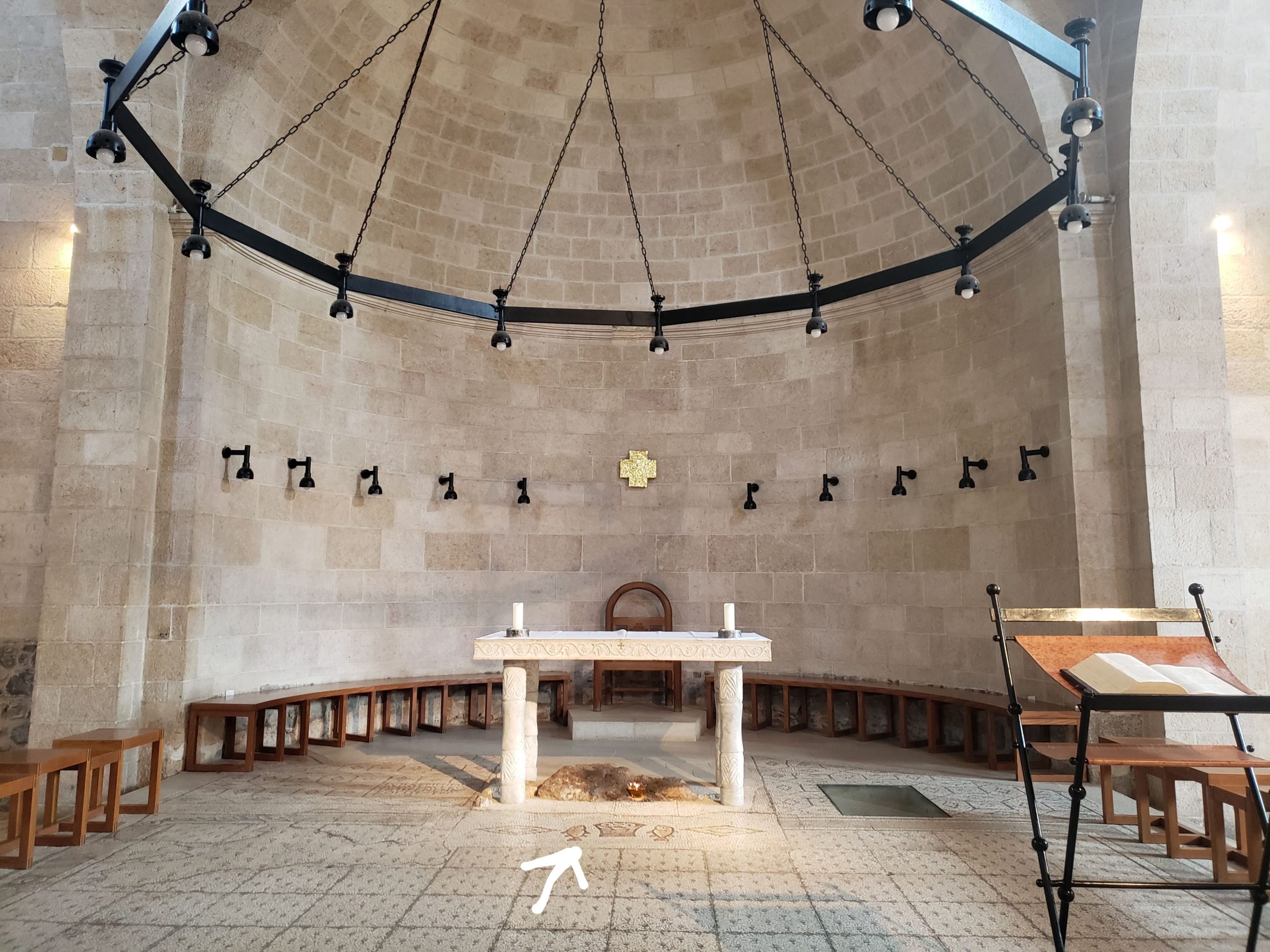
The front of the church houses the rock on which Jesus is said to have placed the bread and just in front of that the famous mosaic of the loaves and two fish. The first building to commemorate this spot was a small chapel built in the 4th century. Later various churches on the site have come and gone and been extended, refurbished etc. The floor mosaics are quite impressive and date from the 5th and 6th centuries. Today the Church and newly built monastery is home to German speaking Benedictine monks.
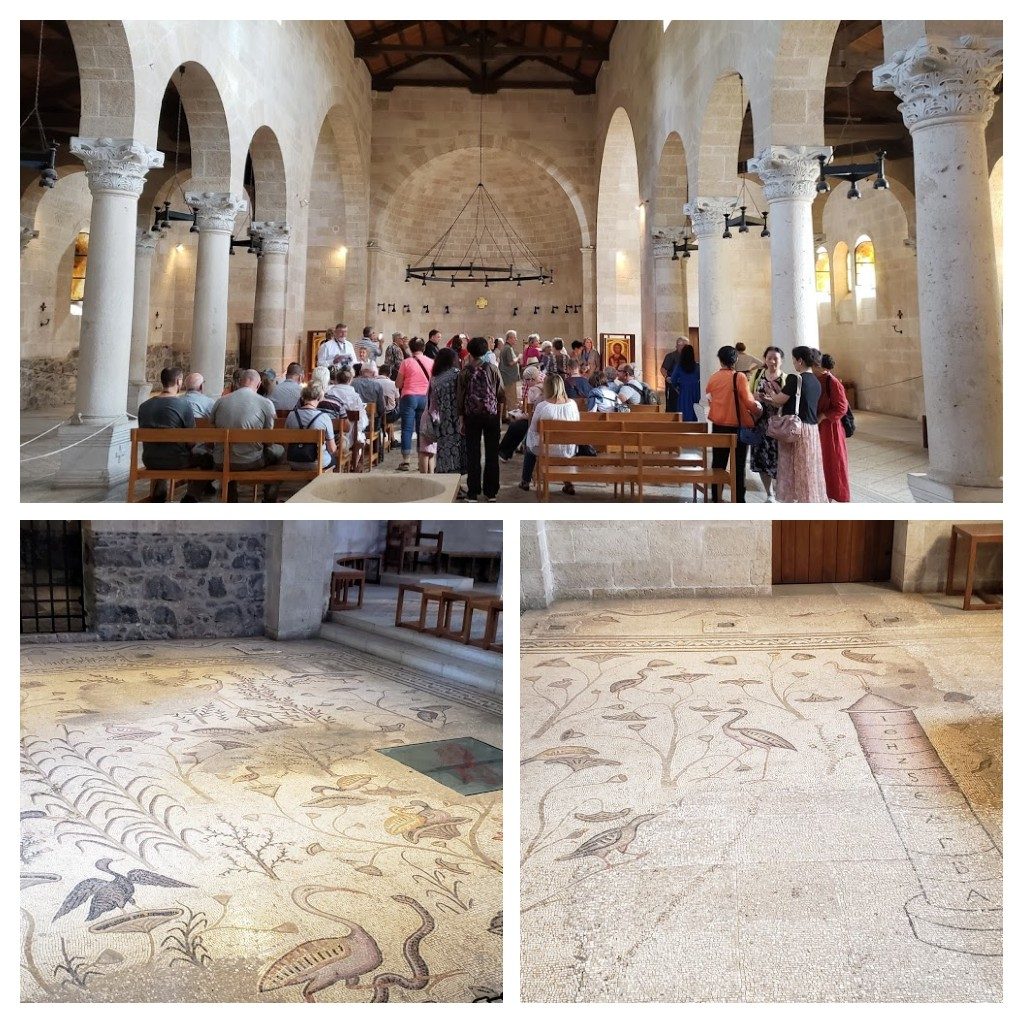
Next we went to the shores of Galilee to the site of the gospel story, recounted in John 21, where Jesus appeared to Peter and the other disciples after his resurrection. A few of the disciples were out fishing at night but not having much luck. Jesus was on the shore in the early morning and called out to them asking if they’d caught anything. They don’t recognise him and reply in the negative. He tells them to throw their nets on the right side of the boat and so they do and can hardly haul in the nets so full of fish were they. They realise it is Jesus and Simon Peter jumps into the water and makes for the shore- the others following in the boat, with their haul of fish behind them. Jesus is there with the fire going making breakfast for them.
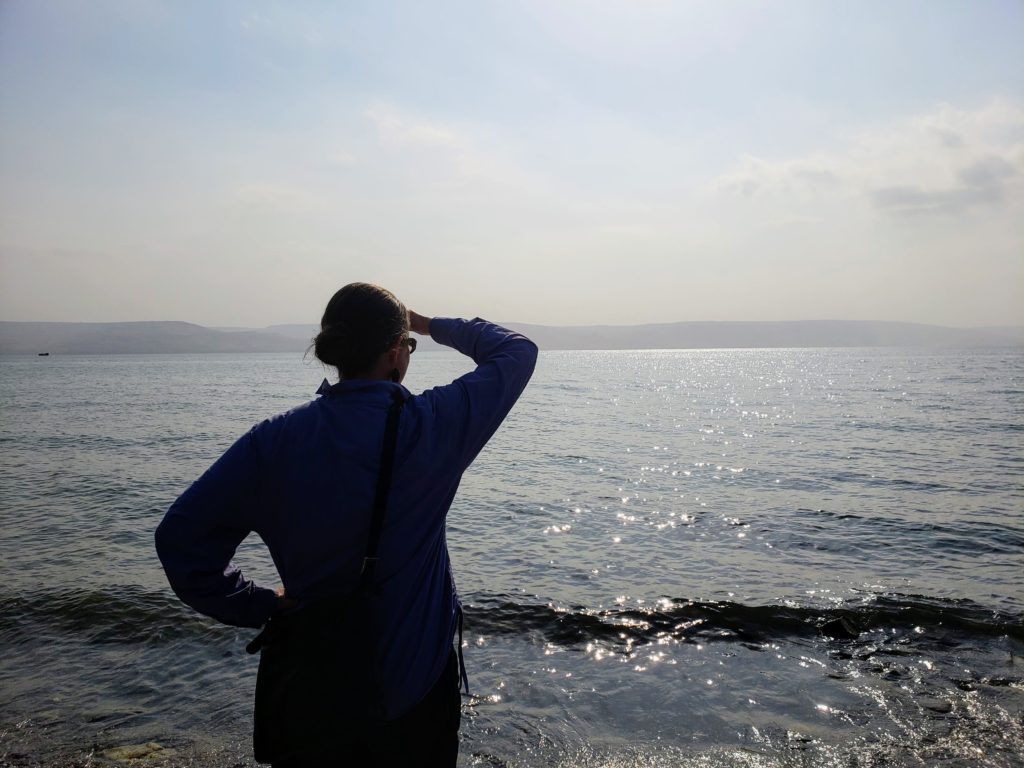
Standing on this shore I could really picture Jesus there with the fire going, cooking some bread and fish ready for his friends who must have been so downcast over his death (and their lack of a catch that night!). It is such a human story of friends having breakfast together and I love how Simon Peter is so excited he jumps into the water to get to the shore first. This spot was my favourite out of all the ‘holy sites’ we visited in Israel.
Built here by the shore is the Church of the Primacy of Saint Peter, a Franciscan church built in 1933, on the site of a 4th century church. It commemorates the reinstatement of Peter – having denied him three times at the time of his death, Jesus then asks him on the beach over breakfast, ‘Do you love me?’ He asks Peter this three times to which he replies you know I do and Jesus then says ‘feed my sheep’. Just in front of the altar is the ‘mensa Christi’, the table of Christ – the rock on which they say Jesus lay out breakfast for his friends. In the grounds heading down to the church and the shore, there were several outdoor chapels where groups held church services.

A few kilometres up the hill was the site where Jesus supposedly delivered his ‘Sermon on the Mount’ (Matthew 5-7). Since the 4th century pilgrims have come here and there are ruins of a church from that time on the mount. The Roman Catholic Church of the Beatitudes which is there today was built in 1938 and has an octagonal floor plan – its eight sides representing the eight beatitudes, which are each written in Latin under the dome. (Blessed are the merciful for they will be shown mercy… Blessed are the peacemakers for they will be called the children of God… etc)

This place was so full of people everywhere that it was quite hard to imagine Jesus here delivering his sermon on the mount. At one point I turned my back on the church and the crowds outside it and looked through the trees. I got a glimpse of what it would have been like when Jesus came up here to deliver his message to the crowds or at least a little bit.

Next we were off to Capernaum – home to Jesus during his ministry years and incidentally the title of a brilliant Lebanese film (See it if you haven’t already – it has nothing to do with this site though!). Jesus moved to Capernaum from Nazareth, taught in the synagogue here, performed miracles and recruited disciples. It was in Capernaum that Jesus met James, John, Simon Peter, Andrew (all fishermen) and Matthew the tax collector.
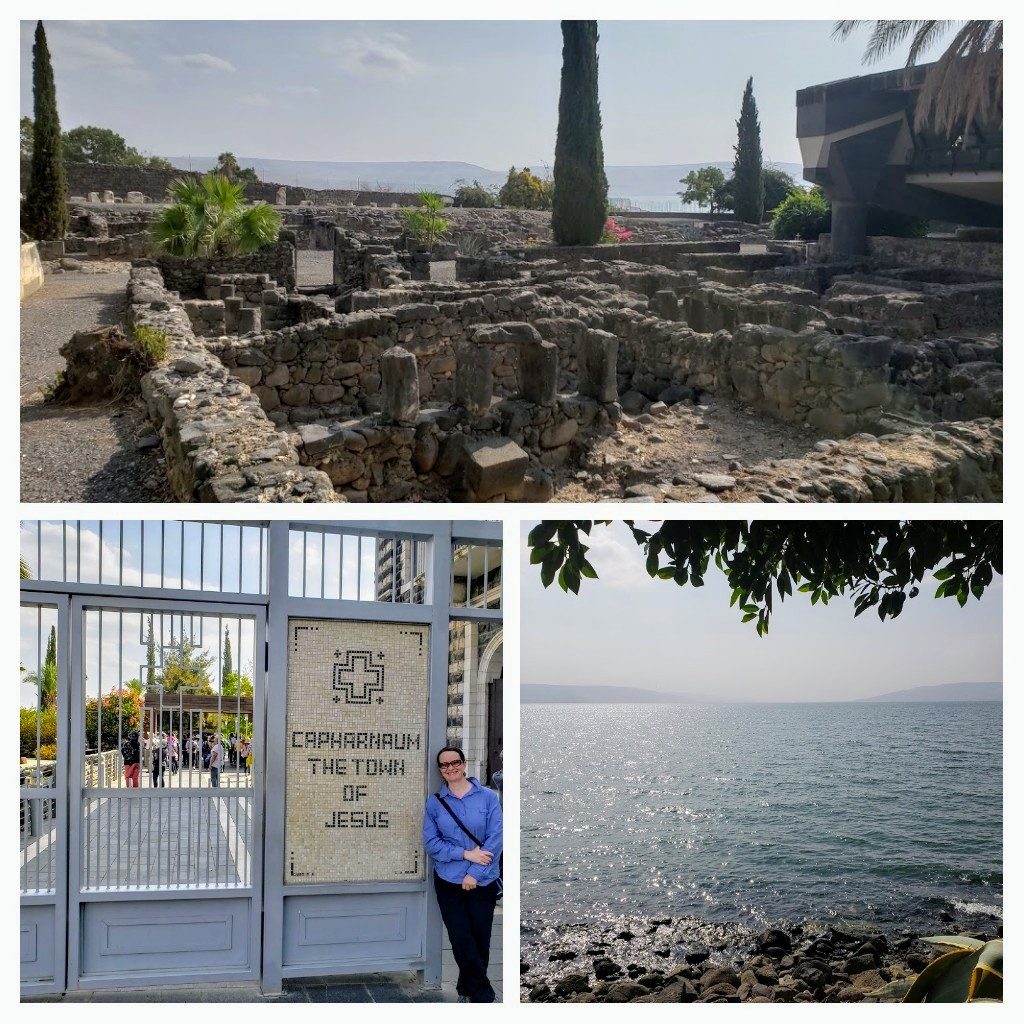
In biblical times Capernaum was one of the main trading villages in the area on the Via Maris – the main trade route connecting Damascus in the north and Egypt in the south. It prospered from the 2nd century BC to the 13th century AD when it reverted to a simple fishing village until the 1800s.
We saw Capernaum’s synagogue, though it would not have been the same one Jesus taught in as it dates from later on – built on the original site though. Pretty crazy to imagine Jesus teaching here regularly. He cured a Roman officer’s servant of palsy and raised the daughter of Jairus from the dead in Capernaum. As he’s walking to Jairus’ house a woman touches Jesus’ cloak and is instantly healed… Although crowds are pressing in, he asks who touched him. The woman comes forward explaining her bleeding condition has been healed, he tells her ‘daughter, your faith has healed you, go in peace’ (Luke 8). Imagining these scenes played out on the very streets we were on is pretty cool!
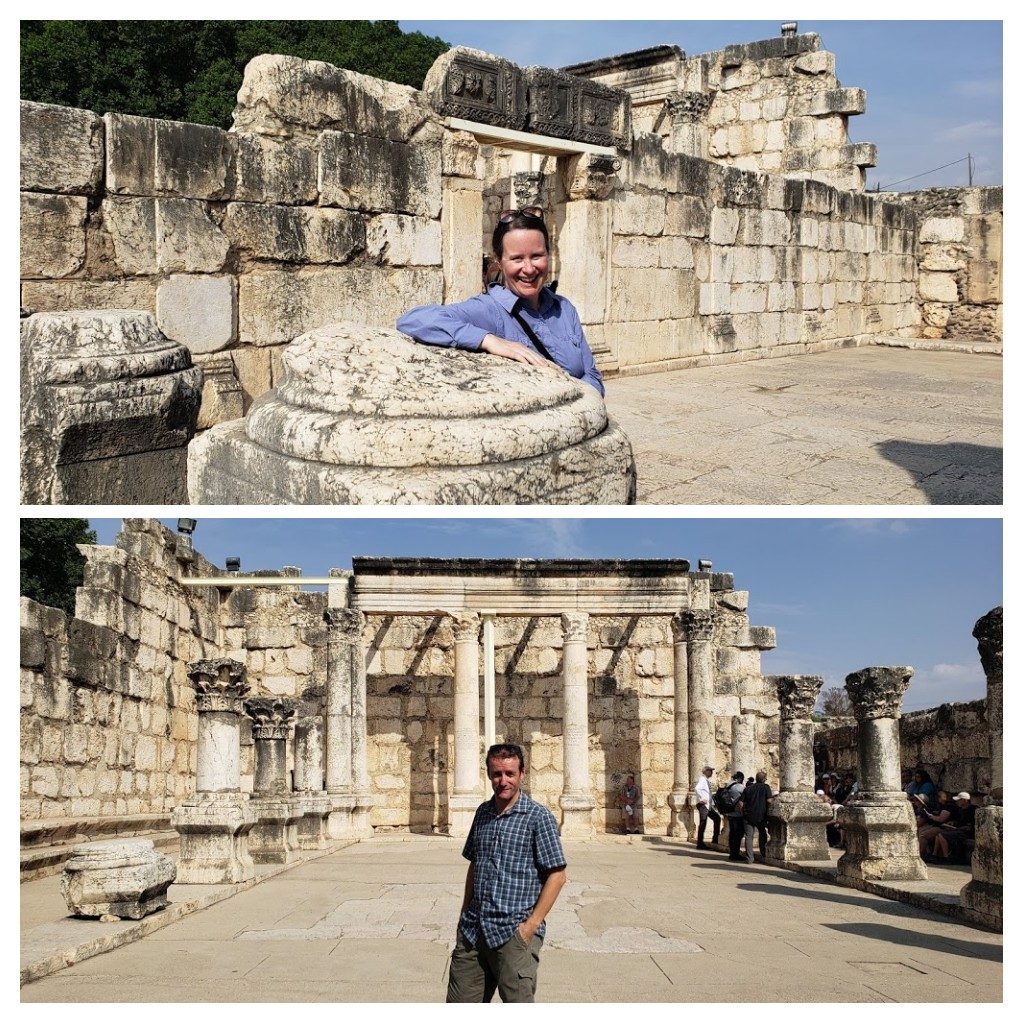
The main structure in Capernaum is a modern catholic pilgrimage church St Peter’s which is part of a Franciscan monastery. It is carefully built over the site believed to be Peter’s house. Not only it is thought to be the house Jesus lived in when he was in Capernaum, it is also where Jesus cured Peter’s mother-in-law (Matthew 8) and healed a paralytic man who was lowered in through the roof (Mark 2). After Jesus death the home became a place of worship and several architecural changes were made to distinguish it from other homes. In the 5th century an octagonal church was built here. We could see the house and church remains under the modern, hexagonal church above it.
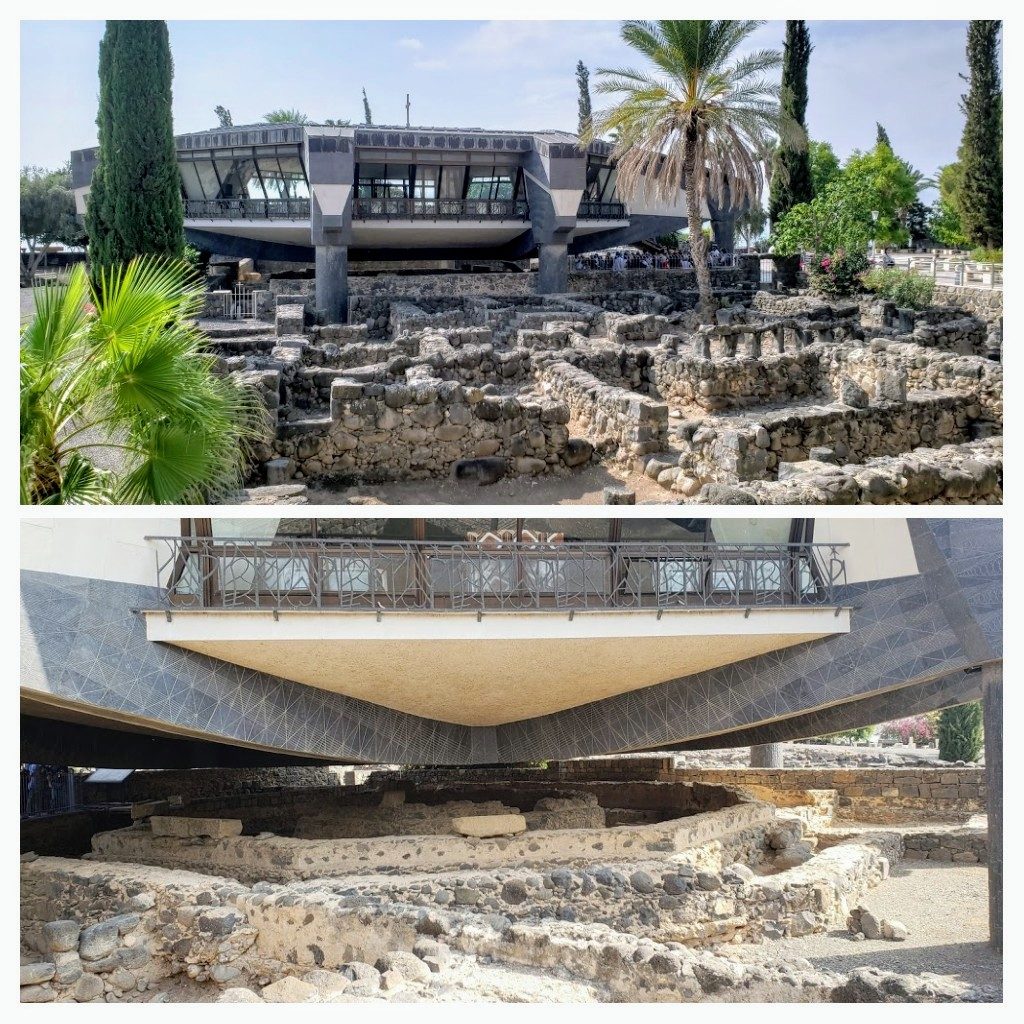
Our last stop in this Sea of Galilee region was the Jordan River. We found a way to get down to the river just off the road. For all its fame (and importance in Israel and Jordan) it was a fairly ordinary looking river! From here we leave Galilee and head to Golan Heights – subject of my next blog post. Stay tuned.
